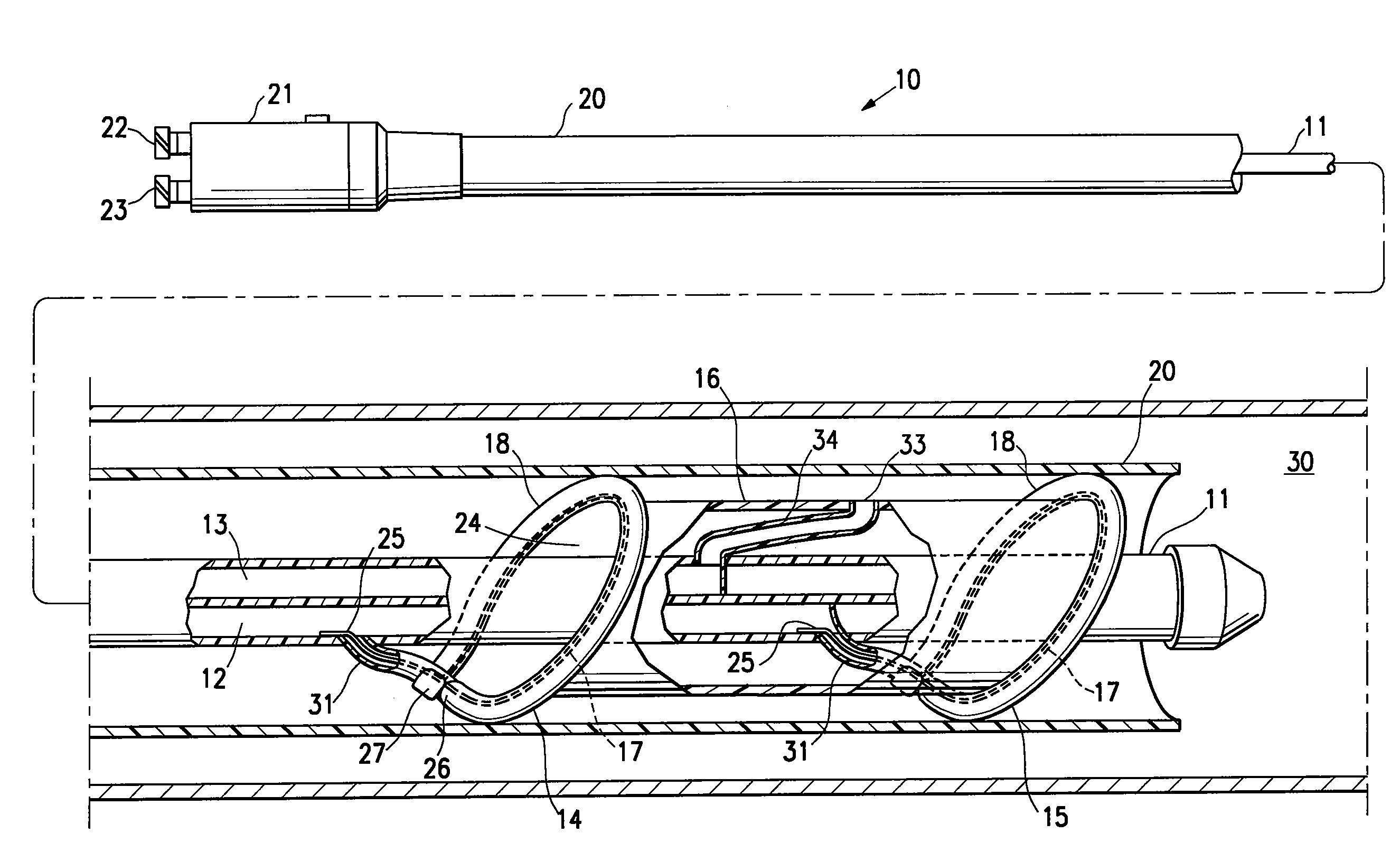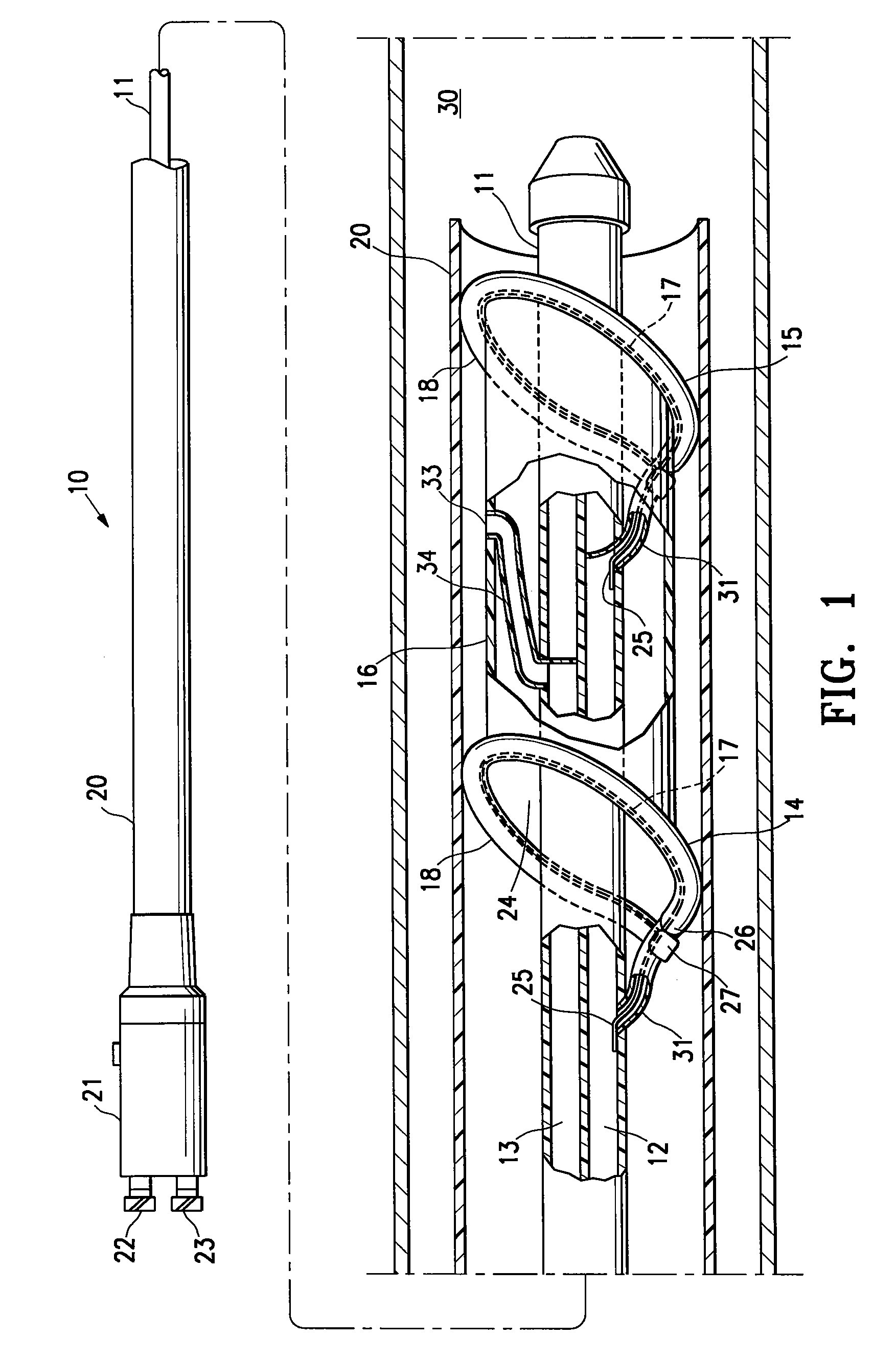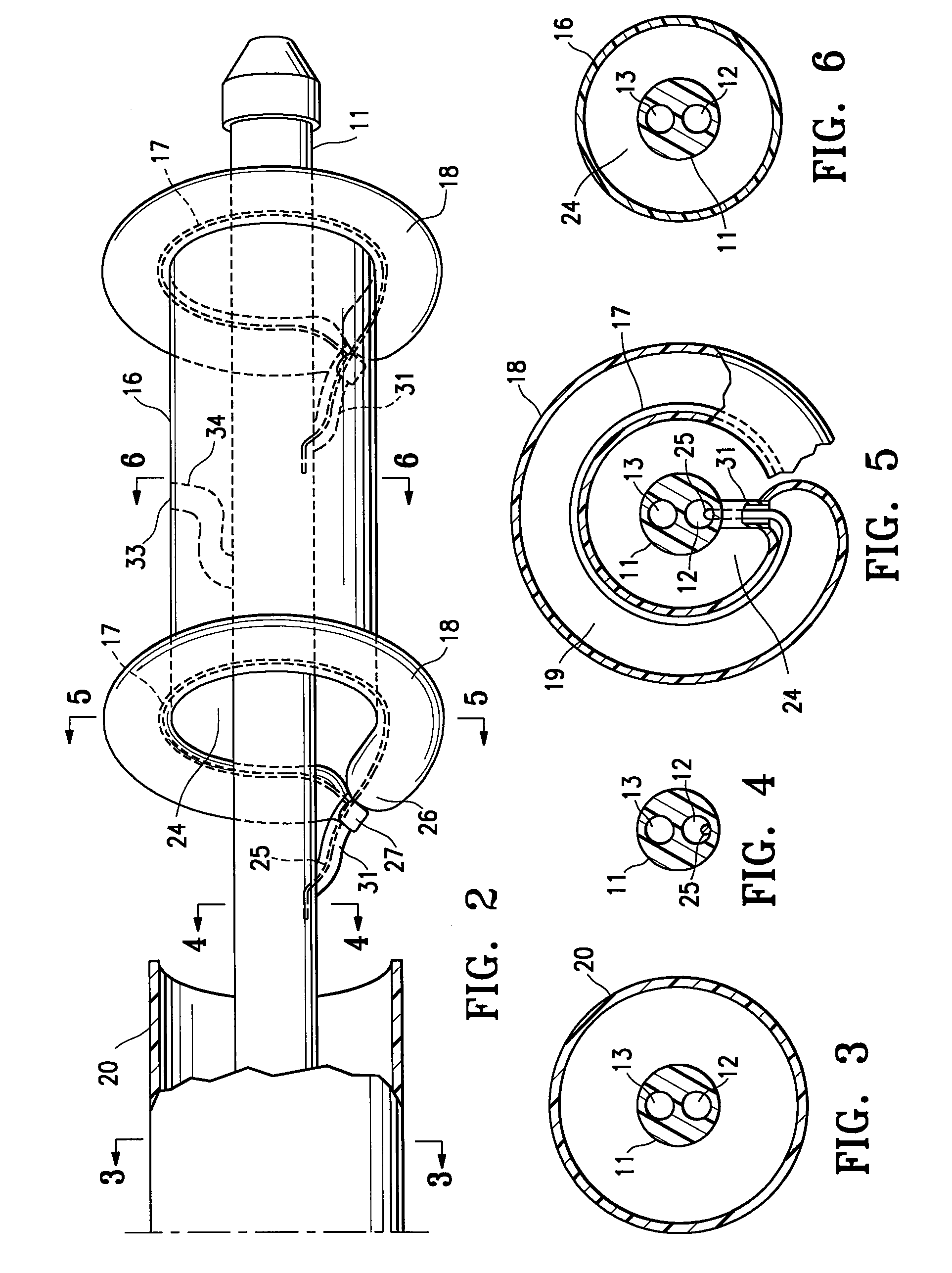Agent delivery perfusion catheter
a technology of perfusion catheter and agent, which is applied in the field of medical devices, can solve the problems of reducing the efficiency of local intravascular drug delivery, drug washout, etc., and achieves the effect of minimizing ischemic conditions
- Summary
- Abstract
- Description
- Claims
- Application Information
AI Technical Summary
Benefits of technology
Problems solved by technology
Method used
Image
Examples
Embodiment Construction
[0018]FIG. 1 illustrates an elevational, partially in section, view of an agent delivery perfusion catheter 10 embodying features of the invention, generally comprising an elongated shaft 11 having an inflation lumen 12 and an agent delivery lumen 13, a proximal sealing member 14, a distal sealing member 15, and a tubular membrane 16 extending from the proximal sealing member 14 to the distal sealing member 15. In the illustrated embodiment, each sealing member 14, 15 reversibly expands from a low profile configuration to a deployed configuration, and comprises a ring 17 which is biased to radially self-expand from a collapsed configuration to a radially expanded configuration upon removal of a radially restraining force therefrom, and a doughnut-shaped (toroidal) balloon 18 which is on the ring 17 and which has an inflatable interior chamber 19 (see FIG. 5) in fluid communication with the inflation lumen 12 of the catheter shaft 11. The rings 17 are shown as dash lines within the i...
PUM
 Login to View More
Login to View More Abstract
Description
Claims
Application Information
 Login to View More
Login to View More - R&D
- Intellectual Property
- Life Sciences
- Materials
- Tech Scout
- Unparalleled Data Quality
- Higher Quality Content
- 60% Fewer Hallucinations
Browse by: Latest US Patents, China's latest patents, Technical Efficacy Thesaurus, Application Domain, Technology Topic, Popular Technical Reports.
© 2025 PatSnap. All rights reserved.Legal|Privacy policy|Modern Slavery Act Transparency Statement|Sitemap|About US| Contact US: help@patsnap.com



